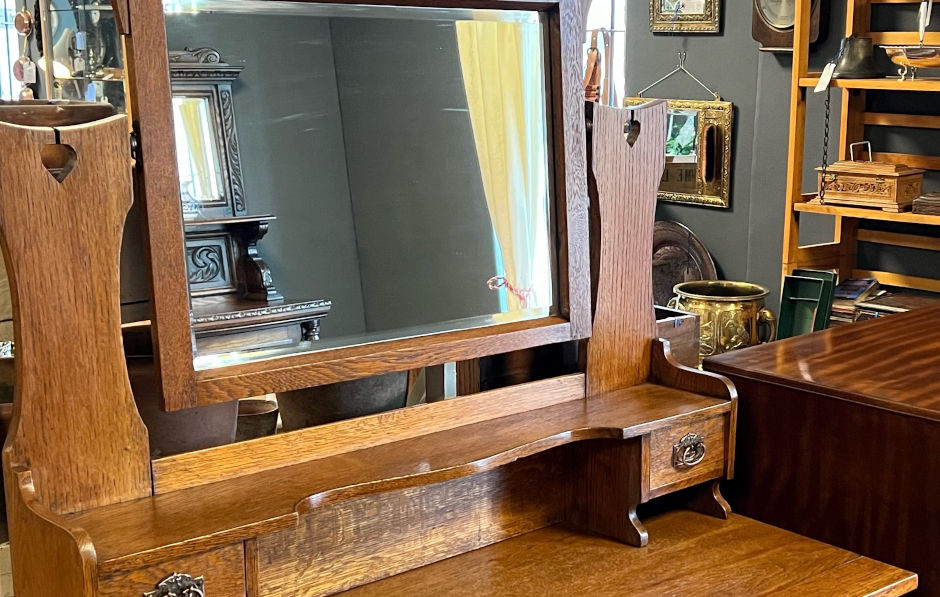
An antique dressing table is one of those rare pieces that can slide seamlessly into contemporary settings everywhere. Whether used for their original purpose or as a display piece, an antique dressing table always makes a style statement.
A history of the dressing table
When we look back at the evolution of the dressing table, we can see definite periods in its journey. The earliest dressing tables were used by the ancient Egyptians and were in fact decorative wooden boxes which held grooming accessories and cosmetics. By the early 17th century, this simple box had evolved to become a toilette, named after the European process of attending to personal grooming and dressing, and by the 18th century, the French had placed it onto a tabletop and drawn a chair up in front of it, and the dressing table as we recognise it today, was born. As high profile society ladies including Madame de Pompadour began to use the toilette or toilet table, interest in this piece of furniture grew, particularly across Europe. The 19th century dressing table had taken on a smaller stature and had become an integral component of a suite of bedroom furniture, rather than a standalone piece, with middle class Victorians being particularly fond of them. The Golden Age of Hollywood coincided with the Art Deco movement and instantly catapulted the dressing table into the realms of glitz and glamour, as they were seen on the silver screen as luxurious props in the world of make believe.
How to identify an antique dressing table
Antique dressing tables can be found crafted in a variety of woods including mahogany, maple, walnut and oak. There are also style and design features of a dressing table that can help to identify its era. For example, 18th century examples demonstrate the ingenuity of designers, with sliding mirrors and hidden drawers, compartments and boxes, with some having hinged, fold over lids which contained a mirror. Victorian dressing tables featured turned or cabriole legs and were ornate in design. The style of dressing table which was known as a Duchess dressing table, had a square or oval mirror plus several small drawers. Victorian dressing tables were crafted in most woods and some were also veneered. In contrast, an Edwardian dressing table is plainer, with turned legs and has more angular lines and often wing mirrors. The Art Nouveau saw the introduction of curved lines at the front of pieces, figural motifs and mirrors held by carved wood supports. This style gave way to the sleeker, geometric lines of Art Deco where we see strong, repeating shapes, with minimal carved embellishments and the use of veneers.
Where to buy an antique dressing table and what to look out for
Buying an antique dressing table from a reputable antiques centre such as Hemswell gives you the peace of mind that pieces are authentic and that you are investing in a genuine antique. From antique pine dressing tables and antique pine dressing table mirrors to wash stands and lowboys, our dealers cater for every taste. Our online selection of antique dressing tables includes antique mahogany dressing tables and antique dressing tables with mirrors.
For commercial buyers who are unable to visit us in person, we offer a personalised virtual tour of our buildings where we can showcase pieces of interest. For overseas shipments, we are also able to make arrangements on your behalf.